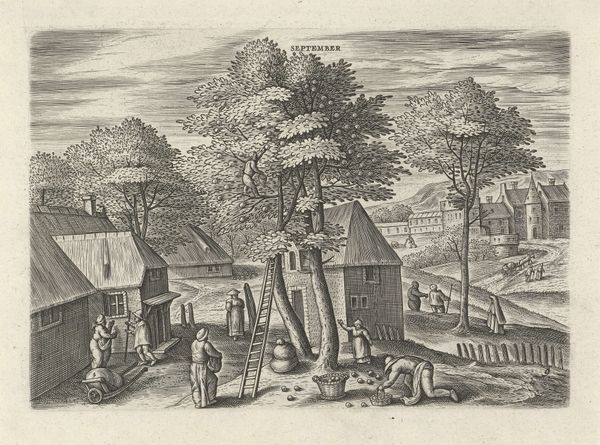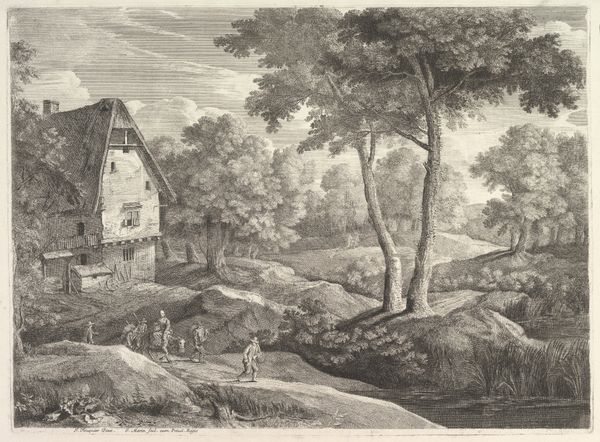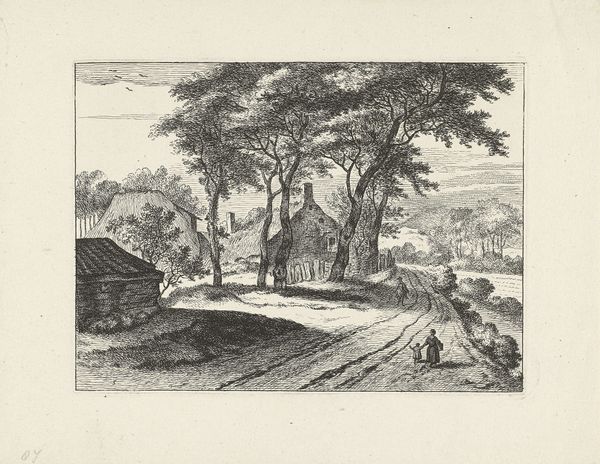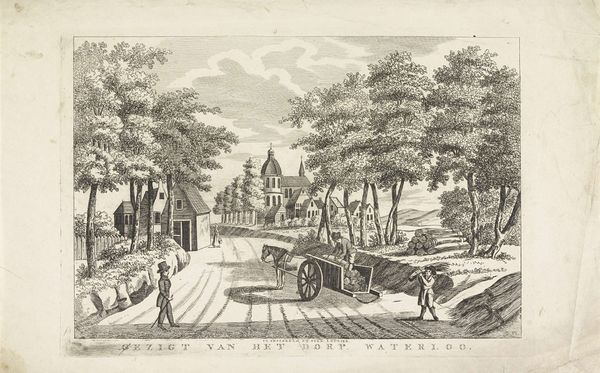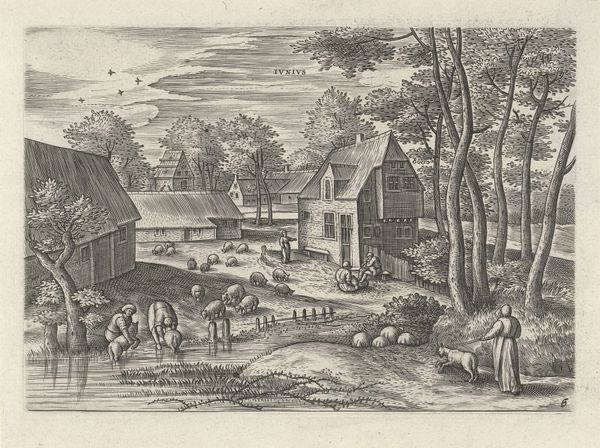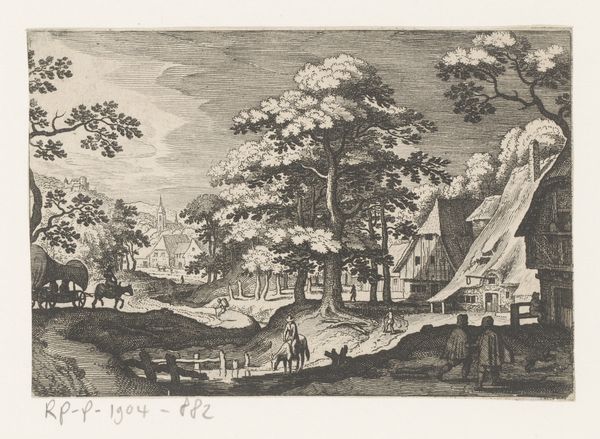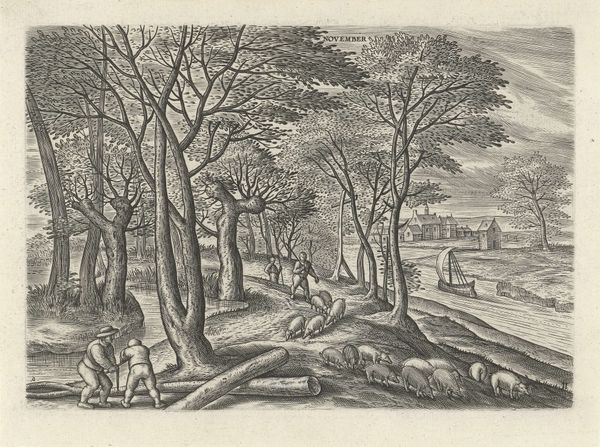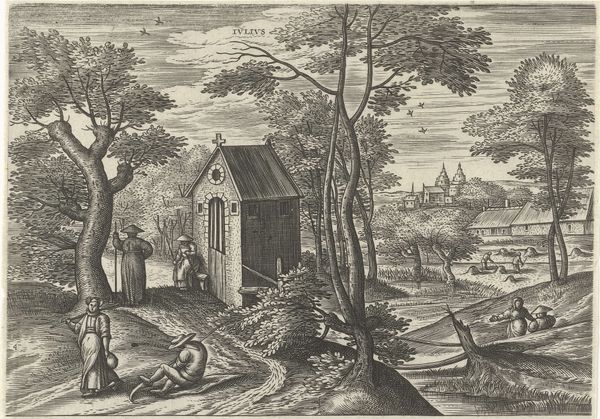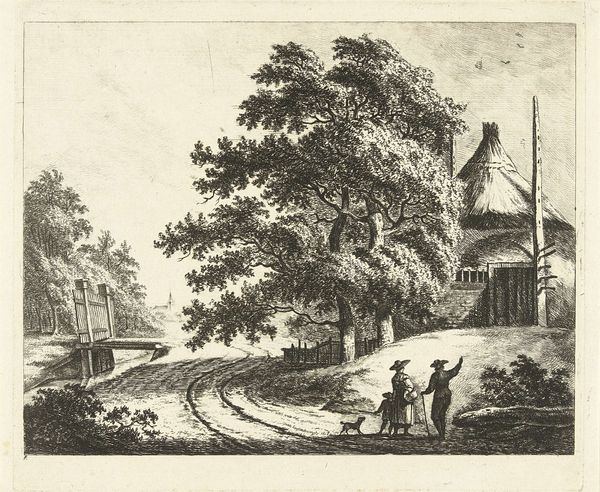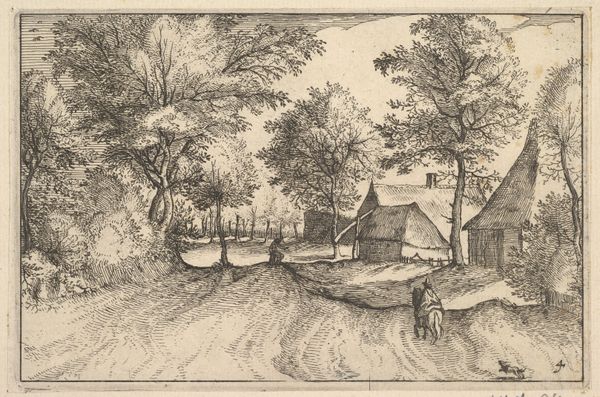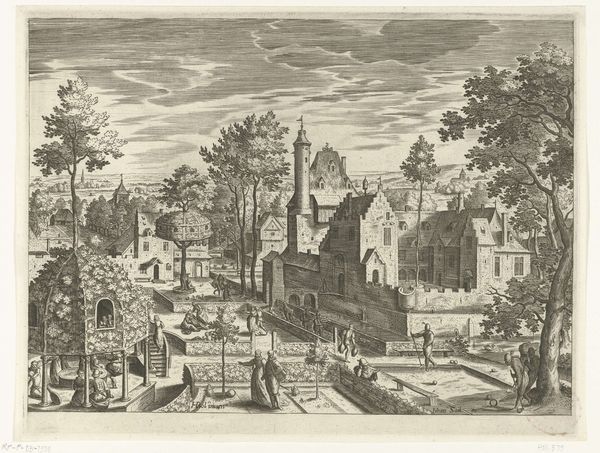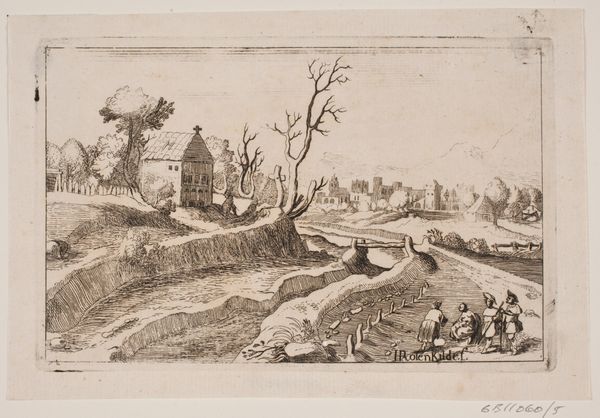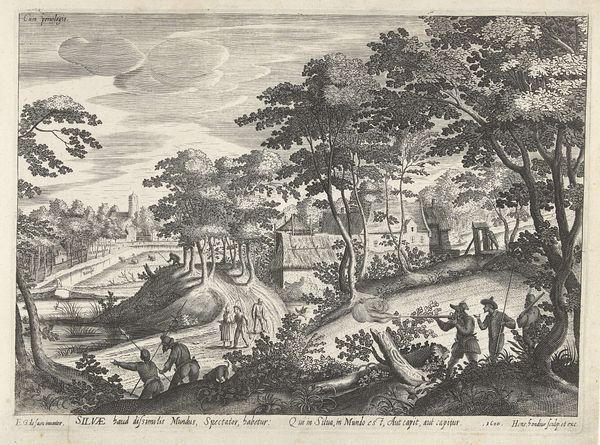
#
landscape illustration sketch
#
mechanical pen drawing
#
pen illustration
#
pen sketch
#
pencil sketch
#
personal sketchbook
#
pen-ink sketch
#
pen work
#
sketchbook drawing
#
storyboard and sketchbook work
Dimensions: width 169 mm, height 124 mm
Copyright: Rijks Museum: Open Domain
Editor: This is Julius Goltzius' "April," made sometime between 1560 and 1595. It's currently at the Rijksmuseum. It's incredibly detailed for a pen drawing. I am really struck by the everyday scenes that the artist depicts. How do you interpret this work, particularly its significance within its historical context? Curator: It's important to understand how Goltzius and his contemporaries approached printmaking. In "April" we see not just a scene, but an idealized vision of rural life, intended for a growing urban audience. Prints like this allowed city dwellers to imagine and consume a romanticized version of the countryside. Notice the ordering of labor—people harvesting, washing, shepherding. Editor: That’s interesting. So, this image of a peaceful, working countryside isn’t necessarily an accurate portrayal? Curator: Precisely. Consider the power dynamics at play. Who owned the land, and who performed the labor? Did prints like this reinforce existing social hierarchies by presenting a harmonious, if perhaps misleading, picture? What are your thoughts about how prints, circulating widely, impacted perceptions of class and work during this period? Editor: It definitely casts the scene in a new light. It seems this artwork offered viewers not just an aesthetic experience but a carefully curated, maybe even biased, viewpoint. Curator: Exactly. Think of it as early public relations – shaping perceptions through selective imagery. The "public role of art" and the "politics of imagery" were intertwined even then. Editor: I’ve definitely gained a greater understanding of how historical and social contexts shape an artwork’s meaning and its impact. Curator: And I’m glad that our conversation could illuminate how artists like Goltzius participated in constructing and disseminating cultural narratives.
Comments
No comments
Be the first to comment and join the conversation on the ultimate creative platform.
